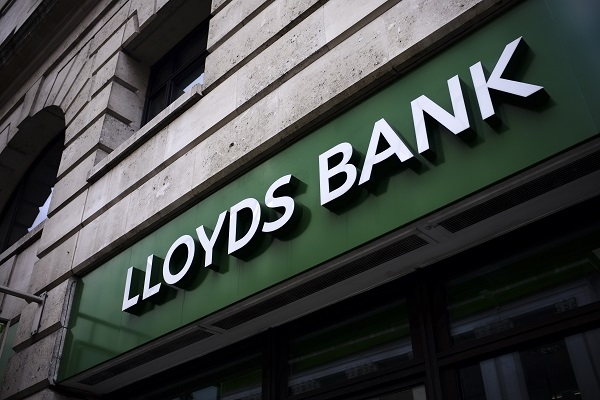Lloyds Bank has slower Q2 but dividend receives boost
26th July 2023 08:34
by Richard Hunter from interactive investor
The high street bank has upgraded financial guidance for the full-year to reflect higher-than-expected interest rates, but the shares suffered an early dip. Our head of markets talks us through latest results.

Despite something of a slowdown in the second quarter as was largely expected, for the half-year as a whole Lloyds Banking Group (LSE:LLOY) has again shown its financial mettle.
Net Interest Margin (NIM) came under some pressure, particularly from margin compression in the mortgage book where renegotiated loans are at slightly less profitable levels. This came at a time when banks are under pressure to increase savings rates given further interest rate hikes, which are clearly beneficial to NIM.
- Learn more: SIPP Portfolio Ideas | How SIPPs Work | Transfer a SIPP
Lloyds made some adjustments which resulted in an increase of £3.5 billion of retail savings accounts, which helped to offset a drop of £6.2 billion in retail current accounts. Even so, NIM for the half-year of 3.18% compares with 2.77% from the year previous and, equally importantly, guidance for the full year was increased to 3.1% from a previous forecast of 3.05%.
Indeed, Lloyds upped a number of guidance measures in its outlook, such as the Return on Tangible Equity number to over 14% from a previous 13%. This was made possible by a strong return of 19.1% in the first quarter which in turn was driven by a hike in underlying income. Indeed, Net Interest Income for the six-month period was ahead by 14%, with a number of other key metrics also underlining the strength of the business.
The capital cushion, or CET1 ratio, remained stable at a healthy 14.2%, still comfortably ahead of the group’s 12.5% target. Elsewhere, the cost/income ratio of 48.8% compared with 51.3% the year previous and remains sector-beating as has long been the case. The bank’s ability to maintain investment alongside keeping a sharp focus on operational costs has been one to which investors have warmed over a significant period.
- UK bank sector results preview Q2 2023
- The UK's coming mortgage crunch
- Why some fund managers love bank shares, but Terry Smith steers clear
Lloyds has also made further provision for impairments, although for the time being there has been no impactful increase in bad debts generally. Indeed, the group has been proactively contacting both individual and business customers offering some financial assistance in an effort to head off problems further down the road. The provision for the half-year of £662 million compares with £377 million the year previous, and is a prudent yet necessary move given a potentially deteriorating economic backdrop.
Overall, an increase of 10% to underlying profit and of 23% to pre-tax profit of £3.87 billion are proof positive that Lloyds remains a tightly-run ship. Quarterly profit was 29% lower than Q1 at £1.61 billion, but was similar to last year. The balance sheet is clearly in rude health, and the bank announced a 15% increase to the interim dividend to 0.92p per share, which takes the projected yield to 5.5%. In terms of further financial returns, the previously announced £2 billion share buyback programme is now 75% complete.
In addition, the move towards a more digital business will reap large rewards as the process evolves, with the closure of office space and indeed branches a reflection of the times as customer behaviour changes. The group currently has 20.6 million digitally active customers, and the 20% reduction in its office footprint since the end of 2021 is expected to grow to 30% by the end of 2024, providing a further boost to margins as more business is conducted online.
- Jeff Prestridge: the best way to build your wealth
- Why I’d buy shares in three of the world’s biggest banks
- The Week Ahead: Lloyds Bank, NatWest, Unilever, Shell, BT
Bank shares have been overshadowed by the recent banking turmoil, while Lloyds has had to carry the additional burden of its reputation as being something of a barometer for the UK economy, which has not been a comfortable ride.
Due largely to these external factors, the shares have seen a dip of around 9.5% over the last six months. Even so, this has not prevented the price having added 5% over the last year, which is largely in line with the wider FTSE100 index which has risen by 5.3%. The second-quarter slowdown has taken some of the shine from the bank’s recent progress, but the market consensus of the shares as a 'buy' for the longer term is unlikely to be unduly affected.
These articles are provided for information purposes only. Occasionally, an opinion about whether to buy or sell a specific investment may be provided by third parties. The content is not intended to be a personal recommendation to buy or sell any financial instrument or product, or to adopt any investment strategy as it is not provided based on an assessment of your investing knowledge and experience, your financial situation or your investment objectives. The value of your investments, and the income derived from them, may go down as well as up. You may not get back all the money that you invest. The investments referred to in this article may not be suitable for all investors, and if in doubt, an investor should seek advice from a qualified investment adviser.
Full performance can be found on the company or index summary page on the interactive investor website. Simply click on the company's or index name highlighted in the article.